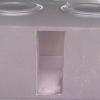-
Recently Browsing 0 members
No registered users viewing this page.
-
-
Recent Topics
-
- 7 comments
- 266 views
-
- 1 comment
- 251 views
-
- 1 comment
- 100 views
-
- 1 comment
- 93 views
-
- 3 comments
- 947 views
-
- 8 comments
- 1,863 views
-
-
-
Recent YouTube Posts


